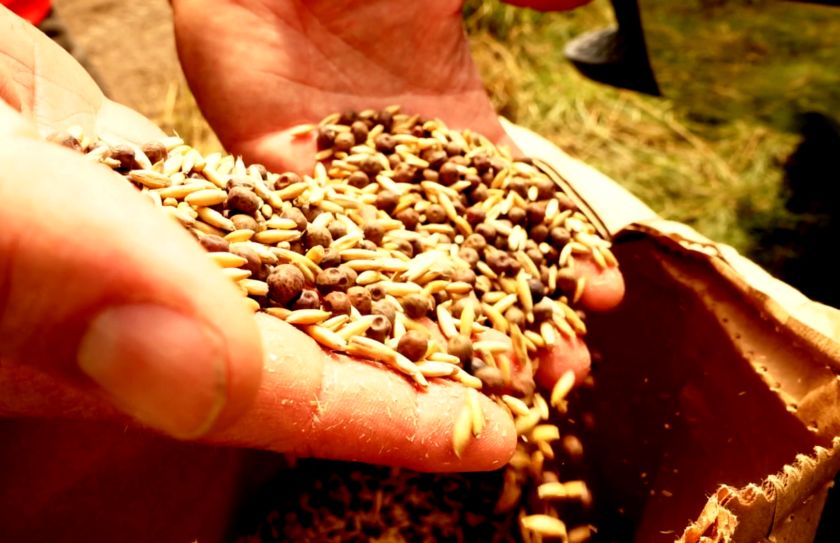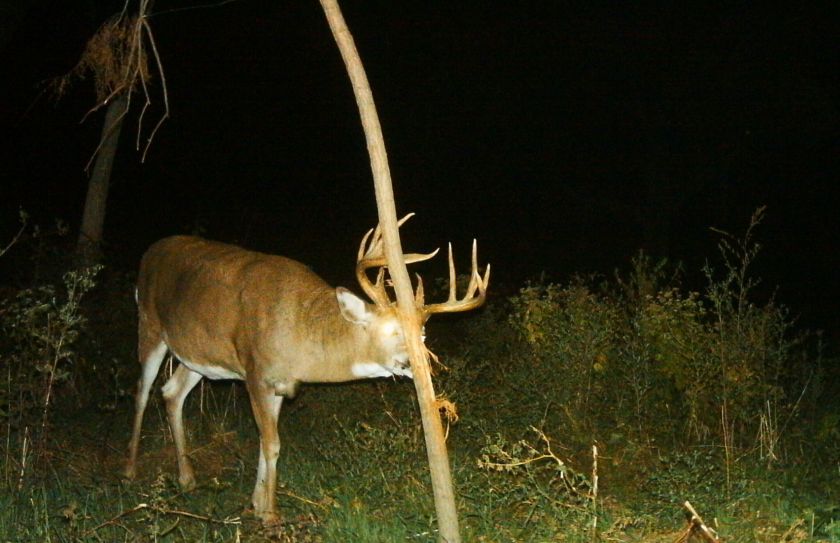*Regardless of poor soils or not, high diversity plantings can build a deer herd. For more info, check out our "Favorite Food Plot Blend From Last Year."
The year was 1999 and I couldn't wait! After a several weeks of planning, the day finally came to take a walk with a conservation forester on our recently acquired property. The forester was nice to talk to and offered many useful insights on various aspects of habitat and timber management as we explored the sandy trails rimmed with a variety of trees and bushes, including: Various pines, spruce, soft maple, tamarack, cedar, birch, fir, and a smattering of young beech. During the walk and talk we were able to view several potential whitetial food plot locations that fit into the overall strategic property layout. I was extremely excited about the establishment of several future food plots and was interested in receiving constructive feedback from the forester. Well, thats when the tour of the property began to turn from excitement, to disappointment.
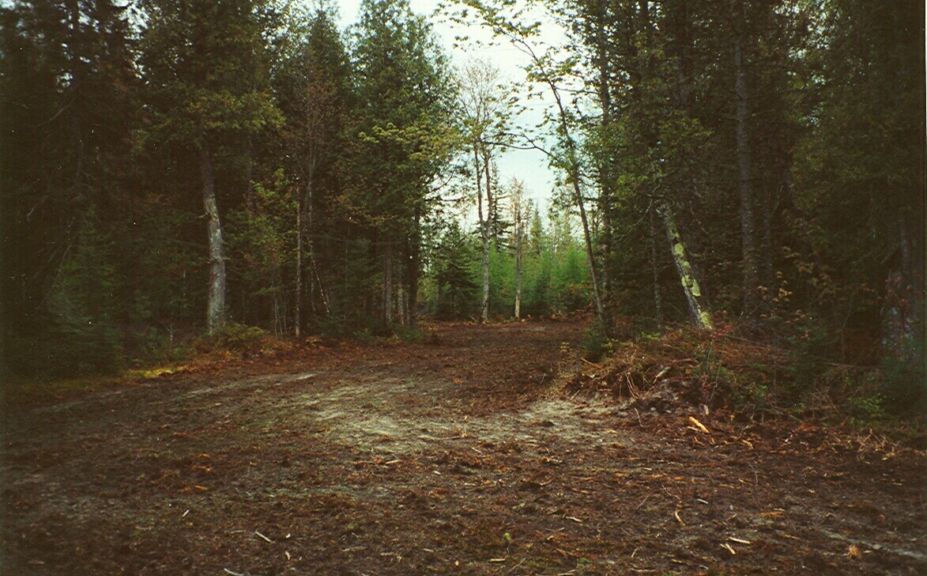
Although I can not recall the exact wording, the foresters comments were something along the lines of, No way, no how, Your soils are too bad, and You should plant rows of red pine instead of fields of clover. Excitement had built over a year or more, quite a bit of reading, talking, and planning had taken place and to say these comments were a setback would have been an understatement. I was left to sulk and be defeated or seek more food plot friendly advice and stubbornly press forward. Im not sure my admittedly familiar stubbornness would typically be considered one of my qualities by friends and family members, but looking back to that walk with the forester on that early spring day in 1999, my stubbornness was on my side. After six summers had past, 50 tons of lime, and over eight total acres of plantings on 17 different food plots, experience with poor soils has shown me that one persons junk can definitely be transformed into another persons whitetail food plot treasure.
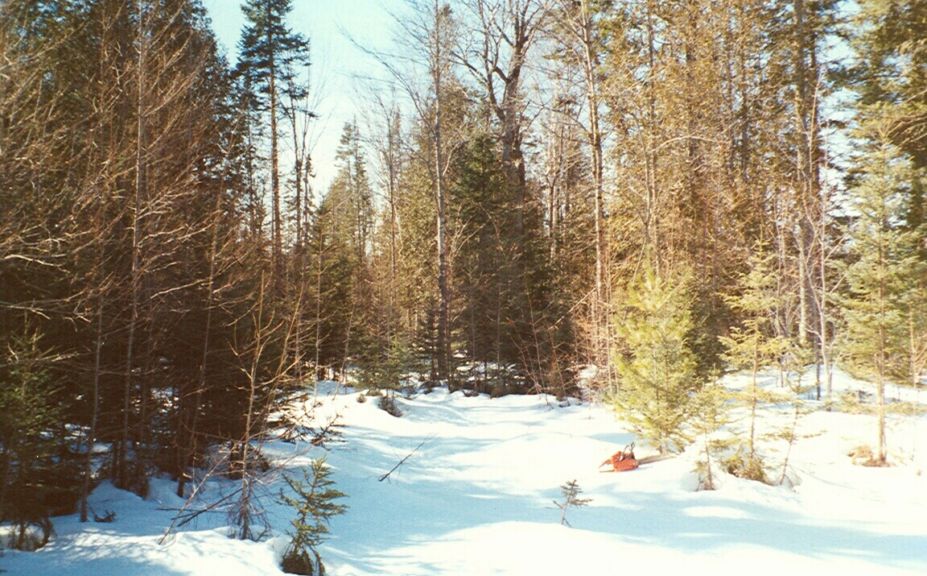
*During the "good old says", how did many of my food plots begin? With a chainsaw and some back muscles. Often a natural opening may be inviting, but a food plot is only as good as where it is located, and not necessarily the quality of the planting. For more food plot location strategies, check out, "4 Critical Food Plot Location Strategies".
Challenge in whitetail food plot futility or hard work to be rewarded?
The initial setback with that particular forester was followed by a more positive meeting with the local Michigan State University agricultural extension agent. The extension agent assisted me in the process of collecting and obtaining the results from several soil tests and did a good job in explaining to me that although my potential food plot soils resembled great blueberry land (which I found was not a good thing!), the success of my plantings would boil down to three things: ph, fertility, and moisture. First, by correcting the soil ph, the plants could then use the appropriate fertilization levels and if those plantings were completed at a time that would insure adequate moisture relative to the soil conditions and future germination and growth of the young plants, then food plot success would be achieved. Also to aid in the success, crop rotations, if possible, would be highly recommended. Sounds easy enough, right? Well, there were just a few obstacles to overcome, including ph levels in the low 4s to 5, fertility levels seemingly non-existant, various weed concerns, and primarily a sandy loam to sandy soil.
Correcting the soil ph of the food plots was labor intensive, initially high in cost, but fairly easy to complete. Over the years Ive found that there are many ways to spread lime and they all work just fine. A couple tons with a shovel, a few tons by hand-held broadcaster, over 10 tons by opening the bottom of a 50# bag and walking with it while waving your arms from side-to-side, and my favorite: A PTO mounted spreader that can hold up to 1000#s at a time. It all works, it just has to be done. Spreading lime is easy on the brain as well. As it states on the bags of lime I apply, The time to lime, is anytime, and that is so true. No worries on time of year, time of season, time of day, soil temperatures or weather patterns, just get it onto the soil and forget about it.
Improving the soil ph can take many months so at the time of application, the soil ph levels were still very low. My ultimate goal was to incorporate a crop rotation with clovers and possibly other perennials as a base, but initially clover was not appropriate. Low ph and poor fertility levels pointed towards seed varieties that were not as finicky. Also, weed problems would be a concern, so the use of chemicals to control potential weed growth was highly recommended. While multiple herbicide treatments were recommended to significantly reduce future weed growth, there was still the task of attempting to improve soil fertility. Both aspects of building a quality food plot would require time, but I felt there was no reason I could not do both at the same time. Sure, for this particular parcel the perennial base was the ultimate goal (this goal can vary greatly by region), but I just can not stand to have nothing growing in a developing field while waiting for the perfect conditions to facilitate a more premium planting. Instead, I have found that improving both weed conditions and fertility can go hand and hand. Also, while developing your whitetail food plot, you and the local deer herd will be much happier if you limit the amount time your field is out of production.
With the use of less finicky annuals, coupled with herbicide treatments between plantings, weed control and soil fertility levels, not to mention plot utalization by the local deer herd, can be all be completed at the same time. The two seed varieties that have worked best for me have been annual rye and buckwheat. Both seed varieties are extremely tolerant to poor soils, both are known as great soil builders, and both are competitive with weed growth. At the same time, both are attractive to deer and can be used at alternating times of the year. A soil building and weed control program utilizing annual rye and buckwheat can be carried out fairly easily as well when considering both seed types are easy to plant by simply broadcasting on exposed soil, and both require little moisture to germinate and are fairly drought tolerant for their respective ideal seasons of growth.
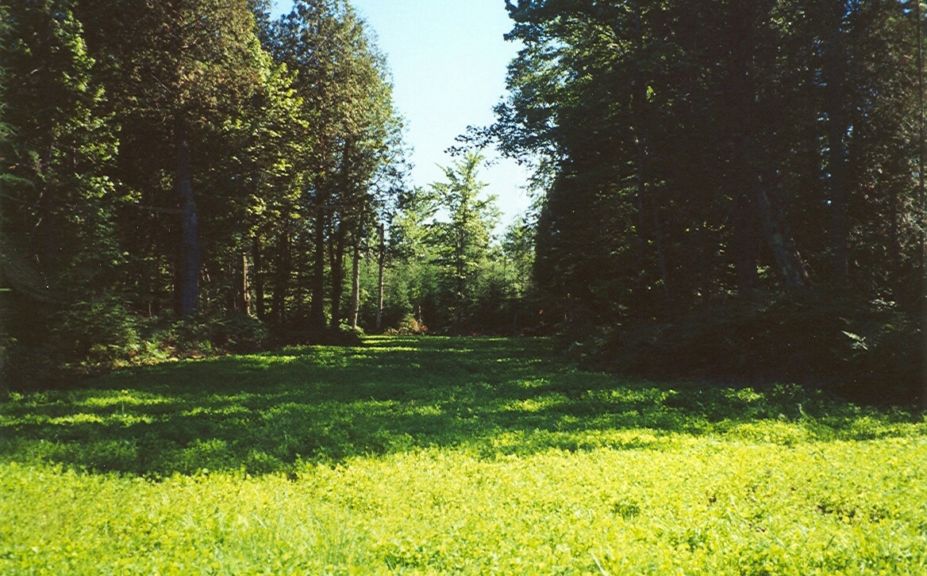
*Are Summer food plots right for you? Maybe, maybe not, and that includes the use of clover. To check out why, make sure to read, "Are Spring Food Plot Plantings Right For You".
A typical new food plot I have installed has had very similar beginnings and has followed some pretty simple steps. Many new plots have started in May. In mid-May the local snow melt on those old UP of Michigan food plots locations, had just about completely dissipated and the fields were in acceptable working conditions. The site was cleared in some manner, either by a chainsaw (not preferred) the FEL on my tractor, light bulldozer work, or a combination of all 3. When the field was level, a minimum of 4 tons of lime per acre was then applied. Typically, the field would sit until the first of June when the frosts and freezes had subsided, and then buckwheat was broadcasted into the field. The majority of the time the seeds were not cultipacked, because buckwheat had proven to germinate well with adequate moisture. After six to eight weeks, weeds were actually a welcome sight within the field and the new plot was sprayed for the first time to control weed growth. Then, at the appropriate time for the region, annual rye was then broadcasted into the field. The new plot was then enjoyed by both deer and hunters for fall through early Winter, and would stay green and productive through the following Spring. About the time the rye is reaching a foot or more in mid Spring there begins a second round of various weeds, including bracken fern. Another shot of herbicide was used at this time, and the field again began the buckwheat phase.By late Summer the field could be sprayed a 3rd time within a year, following 3 soil building crops of buckwheat and rye. Soil tests at this time had shown to be dramatically improved and it was at this time that the new food plot was ready for a more premium planting, including a combination of annuals such as oats, brassica, peas and rye, with a perennial base of clover and chicory that could be maintained on a rotational basis with a life of two years or more, if desired.

If you enjoy advanced whitetail food plot strategies, you'll love my Food Plot Success By Design book!
How fast can poor soil whitetail food plots improve?
Looking back to that spring day in 1999 and that walk with the forester I was especially excited about creating one very remote plot on the back of the property. However, the forester recommended planting rowed red pines instead and explained that this location was most likely the worst location for a food plot due to its slightly crowned location and light soils. I initially headed the warning, but after two full years of contrary experience on the entire rest of the property, I stubbornly created, limed, fertilized, and planted the acre plot on a long weekend, finishing on August 3, 2002. Although the initial recommendation was much higher, due to financial constraints I instead applied 200#s of 19-19-19 per acre of fertalizer hoping this would still be enough for a successful crop of the 100#s per acre of annual rye. After the lime, fertalizer, and seed was broadcast on the exposed soil of the freshly cleared field consisting of scattered young pine, mature pine stumps logged in the early 80s, and a few young spruce, the new field was then rolled with a lawn roller and ATV; my most conveniant method of cultipacking at the time. I was then left to pretend to be a farmer, pray for rain, and wait for the results.
That particular field became a huge success, but it was no different than the rest of the many plots that were scattered throughout the property. By mid-September the plot was a carpet of green and due to the remote location it was no surprise that this plot became and instant hit with the local deer herd. The attractiveness of the field was certainly welcomed, but when I took a soil test the following May and compared them to the initial sampling, the results were outstanding. Only nine months had passed from the time of the initial creating and planting of the plot, but the ph had already improved from 5.0 to 6.5, and that wasnt all. Phosphorus levels on the plot increased from 5ppm to 12ppm, Potassium levels from 10ppm to 42ppm, Calcium levels from 50ppm to 278ppm, and Magnesium levels from 5ppm to 110ppm! The results of the back plot after only nine months had shown dramatic improvement, but my biggest question was what the results of initially my worst plot would show, the creek plot, after three years.
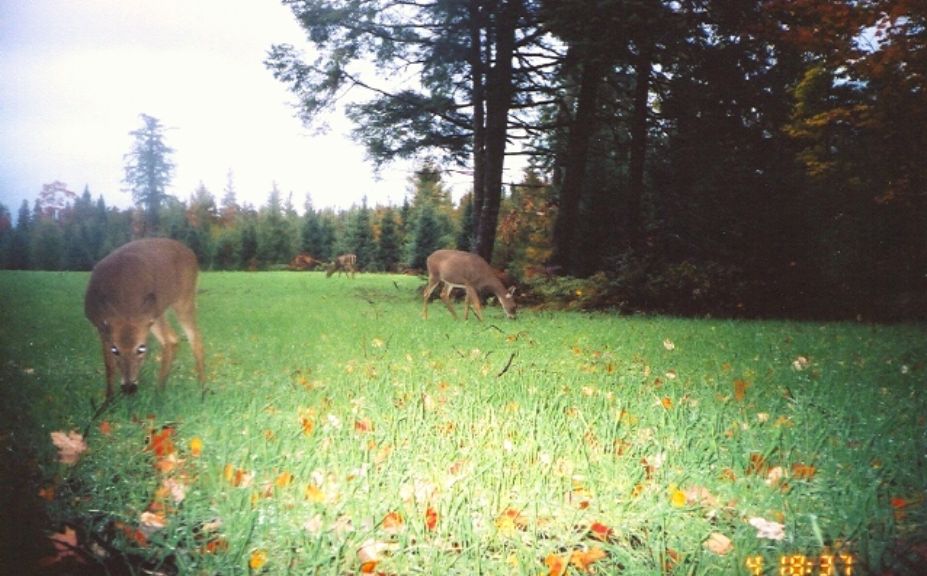
*Rows of red pines? No way! It pays to seek whitetail habitat advice, from an actual whitetail habitat professional. This, first season food plot was an immediate hit with the local deer herd, and a necessary habitat feature in this location. Do you need food OR cover? To help you answer that question, make sure to check out, "Great Deer Habitat Without Quality Food Is Dead".
Of all of the food plots on the property, the creek plot was one of my favorite locations and designs. Over a six-year period the first plot on the property was expanded from a one hundred yard acre plot, to a twisting, partially half-moon shaped plot from 20 to 40 yards wide, covering 225 yards, and eventually containing 1 and acres of premium plantings. The plot is rimmed with a solid representation of young conifer, including spruce, fir, and white pine, but also contains the scattered stately beauty of mature white pine, cedar, and spruce. Of course, there is a creek nearby that includes two beaver dams within earshot to provide the gentle sounds of flowing water to a hunter that may be relaxing in a nearby tree stand, while watching a acre trail and harvest plot extension on the north side of the creek plot. Although this particular plot had provided some of the best mature buck encounters, either by hunter or camera, and was the 2nd most consistently frequented food source on the property, the beginning was not very promising and you can imagine how curious I was in 2003 to receive the results of the three year soil test.
In May of 2000, the indicated ph of 4.1 seemed almost prohibitive, but three years and five tons of lime per acre later, the ph had been built to a perfect 6.9! Frequent successful crop rotations on the creek plot had also contributed to the overall increase in fertility levels, including: Phosphorus from 4ppm to 46ppm, Potassium from 20ppm to 58ppm, Calcium from 50ppm to 555ppm, and Magnesium from 5ppm to a whopping 200ppm!
Conclusion:
Try not to let poor soil get in the way of the perfect food plot!
Both the Back and Creek plots showed significant improvements during their respective soil test time periods, but the success on those plots was mirrored by the other 15 plots scattered throughout the property. The success, however, was not only been evidenced through soil tests, but by the consistent growth of the various plantings within the food plots, as well as the apparent improvement within the local deer herd. Thousands of game camera photos, and hundreds of hours of hunter observations revealed a fawn recruitment rate of at least one fawn for every mature doe, which was double the local average. Also, contrary to the regional average of at least 50% of the yearling bucks carrying small spikes, the majority of the yearling bucks were multi-tined, including the propertys first yearling 8-point photographed numerous times throughout the 2005 growing season. During the hunting months however, was when the sharpest contrast of yearling buck development was realized, as multi-tined resident yearling bucks were often replaced with the pencil-thin and short spikes, of the dispersing yearling bucks that were typical representations of the surrounding area.
Turning junk into treasure requires hard work and patience, but with persistant dedication success can be achieved. By correcting ph and fertility levels, taking advantage of regional moisture trends, rotating tolerant annual warm and cold season seed plantings, while at the same time addressing weed concerns between plantings, poor soil has the potential to yield a high quality and productive whitetail food plot for the continuous enjoyment by both the land manager, and the local deer herd. It may take a little good old fashioned stubbornness, but great results can be experienced quickly while blueberry land is first transformed into a soil building seasonal attraction, and finally into a potential whitetail paradise.

